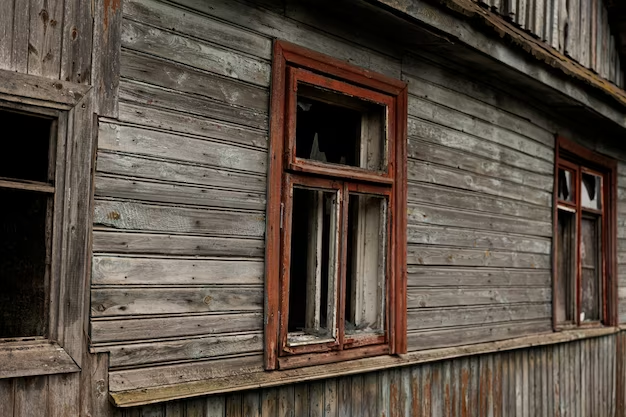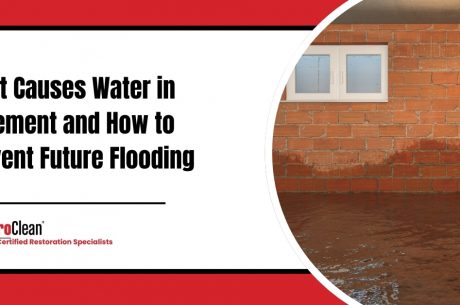
Water damage is a common issue that homeowners may encounter, and one of the most vulnerable elements in your home is wood. When exposed to water, wood can suffer from various degrees of damage. However, the good news is that, in many cases, it can be restored to its former glory.
In this article, we will delve into the world of water damage restoration for wood, exploring what water-damaged wood looks like and how it can be effectively fixed and treated. Let’s begin!
What Does Water-damaged Wood Look Like?
Before we can address the question of whether water-damaged wood can be fixed, it’s important to understand how to identify such damage. Water-damaged wood can exhibit several visual signs, which include:
- Discoloration: Water-damaged wood undergoes a noticeable color shift, typically darkening and exhibiting water stains. These stains vary in intensity, ranging from subtle light browns to more pronounced dark browns, grays, or even deep blacks. This discoloration is a visual cue that the wood has absorbed moisture, signaling potential damage.
- Swelling and Warping: The absorption of water causes wood to swell and warp, leading to an irregular surface. This swelling can make it challenging to operate doors, windows, and wooden floors, as they may no longer align as they should. Such distortions are a clear indication of water damage and its impact on wood’s structural integrity.
- Mold Growth: Excessive moisture within wood creates a conducive environment for mold and mildew growth. These unsightly and potentially harmful fungi thrive in damp conditions. Mold growth on water-damaged wood not only compromises its aesthetics but also poses health risks, making timely remediation crucial.
- Softened Texture: In severe cases of water damage, wood’s structural integrity is compromised, causing it to lose its firmness and become soft and spongy to the touch. This softening can be particularly pronounced, and it signals that the wood has absorbed a significant amount of water, making it structurally unsound and in need of immediate attention.
How to Fix Water Damage on Wood
Fixing water-damaged wood is a process that can vary in complexity depending on the severity of the damage. Here are some steps you can take to resolve the issue:
- Assess the Extent of Damage: Initiate the restoration process by evaluating the scope of the damage. Determine if it is localized or widespread and whether it has compromised the wood’s structural integrity.
- Dry the Area: Swiftly eliminate excess moisture, a critical step in preventing further harm and the growth of mold. Utilize fans, dehumidifiers, or specialized drying equipment to thoroughly desiccate the affected region.
- Clean and Disinfect: When dealing with mold or mildew on wood surfaces, it is imperative to execute a comprehensive cleaning and disinfection protocol recommended by the U.S. Environmental Protection Agency (EPA). Use suitable cleaning agents to eradicate microbial growth under EPA guidelines, ensuring the safety of your environment and the effective removal of these potentially harmful substances.
- Sand and Refinish: In cases of superficial damage to wood, consider sanding and refinishing as a means to restore both its appearance and structural strength. Remove any compromised layers by sanding and then apply a protective finish.
- Replace Severely Damaged Wood: When confronted with severe damage or wood rot, the most prudent course of action might be to replace the affected wood sections. Cut out the damaged portions and install fresh wood in their stead to ensure structural integrity.
How to Repair Water-damaged Wood
Repairing water-damaged wood can be a complex process, and it’s often best left to professionals. Here are some advanced methods that may be employed:
- Epoxy Resin Injections: Epoxy resin is a versatile material used to repair damaged wood. It can be injected into the wood, effectively restoring its strength and structural integrity. This method is particularly advantageous for addressing cracks, splits, or other forms of localized damage, as the resin seeps into crevices and hardens, creating a durable bond that rejuvenates the wood’s structural properties.
- Wood Consolidants: Wood consolidants are specialized products designed to strengthen and consolidate weakened wood fibers. When applied to the damaged area, these consolidants penetrate the wood and harden it, effectively restoring its structural integrity. This method is highly effective for reinforcing wood that has been compromised due to moisture, decay, or other forms of degradation.
Veneer or Patching: In situations involving minor damage to wood, veneers or patching materials are valuable solutions. They can be applied to conceal and reinforce the compromised areas, effectively restoring the wood’s appearance and structural integrity. This method is suitable for surface imperfections or blemishes that do not require the removal or replacement of entire sections of wood.
How to Treat Water-damaged Wood
Prevention is often the best treatment for water-damaged wood.To safeguard the wood from future water damage:
- Use Sealants: Sealants and finishes, such as polyurethane or varnish, act as protective barriers for wood. By sealing the surface, they make it less permeable to moisture, reducing the wood’s susceptibility to water damage. This safeguards the wood from swelling, warping, and other forms of water-related deterioration.
- Maintain Proper Ventilation: Proper ventilation in your home is crucial for preventing the buildup of excessive moisture. Adequate airflow helps regulate humidity levels, reducing the risk of damage to wood structures and furnishings.
- Regular Inspections: Consistent monitoring of wood surfaces is essential for early detection of water damage. Periodic inspections allow you to identify any signs of discoloration, warping, or mold growth. Promptly addressing these issues can prevent more extensive damage and costly repairs down the line.
Frequently Asked Questions
Does water-damaged wood need to be replaced?
Water-damaged wood often needs to be replaced, especially if the damage is extensive or if the wood has weakened structurally. Restoration may be possible for minor damage, but it’s critical to assess the extent of the damage and consult a professional for the best course of action.
Will water-damaged wood dry out on its own?
Water-damaged wood can partially dry out on its own, but this doesn’t guarantee a full recovery. It may warp, swell, or develop mold if not properly addressed. Quickly removing moisture and employing appropriate drying techniques is crucial to prevent further damage.
Is water damage on wood permanent?
Water damage to wood can be permanent if left untreated. It can lead to rot, structural weakness, and aesthetic issues. Timely intervention with drying, dehumidification, and potential repairs can mitigate or prevent permanent damage.
How long does it take for water to destroy wood?
The time it takes for water to destroy wood varies based on factors like wood type, moisture levels, and environmental conditions. Significant damage can occur within days or weeks, but immediate action to remove moisture can prevent rapid deterioration.
Can I fix water-damaged wood on my own?
Repairing water-damaged wood can be a DIY project for minor damage. However, extensive damage or structural issues often require professional expertise. Proper drying and restoration techniques, as well as safety measures, are essential when attempting repairs.
Conclusion
Water-damaged wood can often be fixed, but the extent of the damage and the required repairs can vary widely. It’s crucial to act promptly when water damage is detected to prevent further deterioration and costly repairs. Understanding the signs of damage and having the knowledge to repair and treat water-damaged wood can help you maintain the beauty and structural integrity of your wooden surfaces.
At PuroClean Zephyrhills, we specialize in water damage restoration. Don’t let water-damaged wood ruin your home – contact us today for expert assistance in restoring your property to its former glory.



 PuroClean Certified Restoration Specialists
PuroClean Certified Restoration Specialists